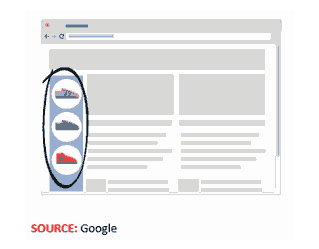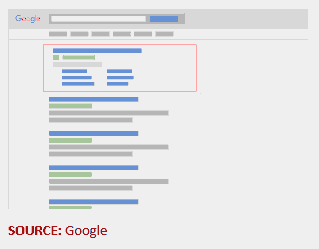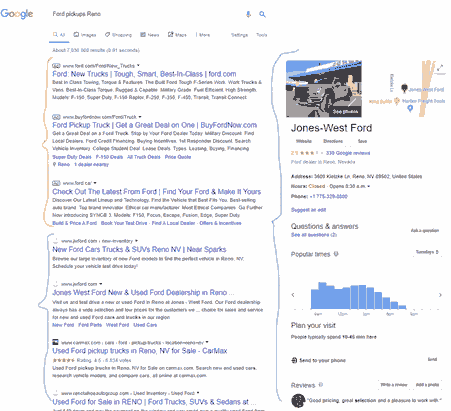
Digital Marketing {The Ultimate Guide} by a Reno Digital Marketing Expert Part 4
Chapter 4: Pay-Per-Click (PPC) Marketing
INTRODUCTION
If you are an online marketer, there are several ways that you can go about advertising your product or service. However, whether your product/service sell depends on the amount of traffic your website receives as a result of your marketing efforts. But not all that traffic might be relevant, with some visitors simply “stumbling” to the site without looking for it in specific searches.
One very effect means of ensuring you receive high volumes of relevant traffic is to use Pay-per-click (PPC) advertisements as part of a broader marketing strategy.
WHAT IS PAY-PER-CLICK (PPC) MARKETING
Pay-per-click (PPC), also called Cost-per-click (CPC), is an internet ad model that online marketers use to drive traffic to their websites (or other online presences – like Social Media account pages). The model is based on advertisers paying a platform, where their advertisements appear, a certain fee, either fixed or variable, based on the number of times platform visitors click those ads.
PPC is a strategy to drive prospective customers, who otherwise may not come to a website, to visit the site that pays the platform owner. It is an online marketing tool that, when paired with other traffic-driving strategies, such as Backlinking, can generate a fair number of additional visitors to a website.
HOW DOES SOCIAL PAY-PER-CLICK (PPC) MARKETING WORK?
Advertisers (website operators or business owners) pay for advertisements hosted on a publisher’s platform (another website, or a search engine like Google, Yahoo, Bing, or social platforms like Facebook or Instagram).
Typically, these ads target specific keywords that are popular among those entering web queries for a niche. There usually is a bidding process involved, where the host sells the ad space to the highest bidder for a keyword. Other PPC models may charge a flat rate without going through a bidding war.


The above image shows a snippet of a SERP for the keyword “ford pickups Reno”. As you can see, the ads (as highlighted by red brackets) are likely to be the first entries that catch a query submitter’s attention. PPC campaigns may also include featured ads (as highlighted by blue brackets on the left). The other links (as highlighted by green brackets) appear below the ads, lower down or in less prominent places of the SERP real estate. As a result, searchers are more likely to click on PPC-driven links to explore the site further. PPC ads hosted through Google Ads, for instance, typically appear above a Search Engine Results Page (SERP) for a given keyword or key phrases. They may also appear to the left or right of, or below the SERP.

WHY PAY-PER-CLICK (PPC) MARKETING MATTERS
If your ad appears in the top few search results, or features in a prominent location of a SERP, your website is likely to receive more traffic. PPC is therefore a big traffic magnet for online marketers.
Advertisers use PPC, combined with other metrics such as Cost Per Impression (CPI) and Cost Per Order (CPO), to assess a websites’ cost effectiveness or profitability. More specifically, the rate at which surfers click on an ad (the click-through-rate – CRT) tells the advertiser (website owner) how effective a specific ad campaign was.
It does so because web surfers and searchers typically won’t click on a link (or ad) that does not arouse their interest or grab their attention. So, if you want to know whether your PPC advertisement is effective, or if the platform is the appropriate one to host it, your click-through-rate (CTR) can answer those questions.
CHAPTER SUMMARY
Pay-per-Click (PPC) is an online advertising strategy that helps website owners and online marketers drive traffic to their site. This paid model of advertising works by paying advertising platform hosts, like search engines and other website operators, each time a visitor to their sites click on your ad. The underlying concept of PPC is “There’s opportunity in numbers!”. The greater the number of visitors (traffic) your site receives, the better your chances of converting some of them.
Reach out to PPC expert Sandy Rowley, at Reno Web Designer, to get help with your PPC strategy.
COMMON TERMS & TERMINOLOGY
- Ad Position: Typically, SERPs display approximately 10 paid ads per results page. Your ad position is where your ad appears on that list, and it is determined by how much you pay for the ad (bid) and your quality score (relevance) with regards to the web query
- Quality Score: A score assigned by advertising platforms to your ad, based on the relevance that your ad (and the corresponding content on your website) has to the keywords that you bid for
- Cost Per Acquisition (CPA): Calculated as Cost divided by Number of Acquisitions. Determines what you pay to the platform that hosts your links, based on specific actions (“acquisitions”) that visitors perform, such as watch a video, sign-up to Newsletters or purchase a product
- Click-Through-Rate (CTR): A measure of how successful your online advertisement campaign is. The formula for calculating CTR is: (Number of Clicks that the ad receives / Number of times the platform displays your ad) / 100
- Impressions: Counts the number of times the advertising platform displays your ad. CTR calculations use Impressions as the denominator in CTR calculations
- Return on Investment (ROI): Is a very broad-based profitability metric which calculates how much you earned versus how much you spent on your ad campaign
- Return on Ad Spend (ROSA): Similar in concept to Return on Investment (ROI), except ROSA focuses narrowly on revenue generated per dollar spent on ads. ROI may typically include other elements into its calculation (e.g. Total Cost)
- Search Engine Results Page (SERP): This is a summary page that pops up each time someone keys in a search engine query. The SERP typically highlights links, content and ads, from paid subscribers to its services, higher-up in the results
- Search Query Report (SQR): A report, generated by advertisement hosts and networks, highlighting the performance of your ads. The report provides vital statistics that tell you how many times specific keyword queries by searchers trigger the ads




